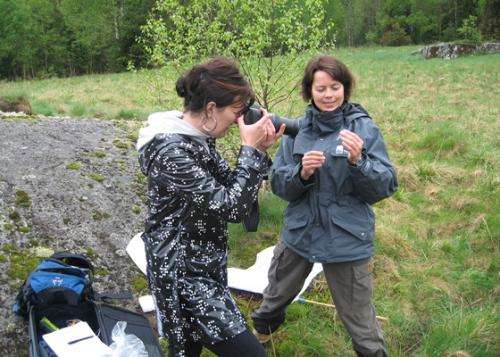Climate and environmental changes affect the occurrence of diseases transmitted between animals and humans

How are human and animal diseases in general affected by the climate becoming "wilder, wetter and warmer"? Solveig Jore's doctoral research shows that the tick Ixodes ricinus has spread over larger geographical areas in Norway and that climate and environmental changes, access to host animals and demography affect tick distribution in Norway. Furthermore, local climatic conditions can have a decisive influence on the ability of the tick to spread dangerous viruses. The climate can also play a role in the spread of gastrointestinal infections.
The effects of climate changes are the easiest to detect and are probably most pronounced near the geographical distribution limits of the infection or for the vector which carries the infection. Norway represents the northern distribution limit in Europe for the tick Ixodes ricinus and is therefore well suited as a location for investigating how climate changes affect the distribution of this tick.
By correlating different sources of data on tick distribution, we find that occurrences of the commonest species of tick in Norway (I. ricinus) have been reported considerably further north and higher up in mountainous regions than was formerly the case. The distribution pattern of I. ricinus has changed substantially over the last 50 years and we can now expect to find this tick as far north as Harstad, which is 400 km further north than previous records. The tick has also been detected at altitudes as high as 700-800 metres above sea level. This means that there is an increased risk of humans and animals becoming infected and falling ill in new areas of the country.
The occurrence of the viral disease tick-borne encephalitis (TBE) has been documented in several parts of Norway for the first time. Research shows that the occurrence of the TBEV virus responsible for TBE in infected areas is at an equivalent level to that shown in other European studies. Jore examined the relationship between the distribution of the virus in the tick and microclimatic conditions at seven different collection points along the southern coast of Norway. Her findings suggest that the degree of humidity in the air can have a decisive effect on how this virus can survive/reproduce in the tick and then be transmitted to humans via tick bites.
Jore discovered a strong connection between a higher prevalence of ticks and changes in certain climatic factors, overgrown vegetation, an increase in the number of deer and the number of farms with ruminants.
The analyses carried out in this study underline the importance of taking into account seasonal fluctuations in climatic variables and not just average changes. Since the current changes in the climate are expected to increase the fluctuations in certain variables (i.e. changes in extreme values), Jore's doctoral research emphasises how important it is to focus on this aspect when evaluating the effects of climate changes and when modelling for the distribution of the disease.
Campylobacteriosis is the most common bacterial cause of gastrointestinal disease in humans in Norway and Europe, and chicken is believed to be a main source of infection in humans. The occurrence of this disease in humans and chickens was studied in six European countries and in all the countries, there were clear seasonal and correlated variations in both types of the disease, with the highest incidence occurring in the summer. These variations may be due to the changes in temperature themselves, or to factors influenced by temperature changes in the summer season.
More information: BVSc Solveig Jore defended her doctoral research at the Norwegian School of Veterinary Science on 4th April 2013 with a thesis entitled: "The impact of climatic factors upon Zoonotic diseases – an epidemiological investigation"










.jpg)





